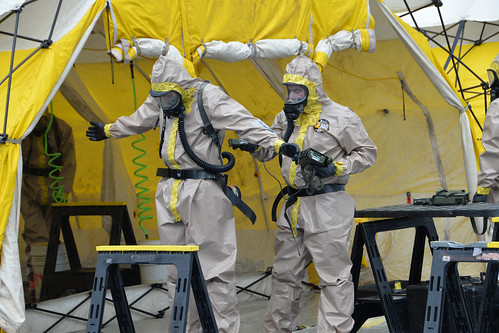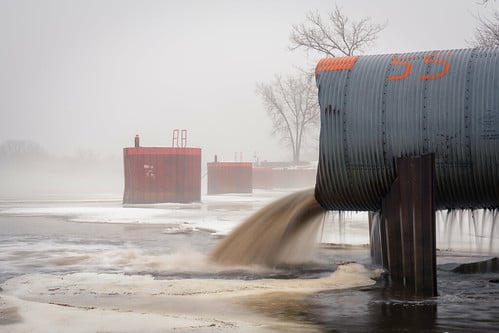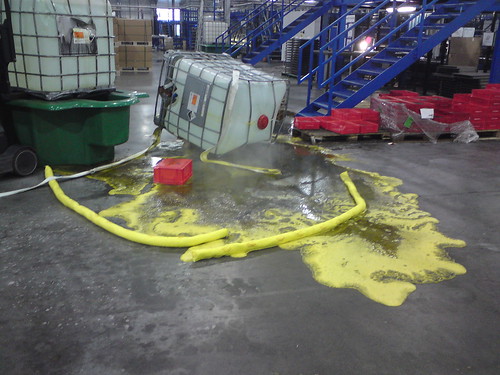The 2016 Amendments to the Toxic Substances Control Act (TSCA; the “Frank R. Lautenberg Chemical Safety for the 21st Century Act”) assigned the Environmental Protection Agency (EPA) a variety of new responsibilities and powers to review and regulate chemicals in commerce in the United States. These changes include additional requirements to review chemicals already in use (I summarized this piece of the new TSCA here). Despite all the changes to EPA priorities since 2016 (i.e., during the Trump Administration), EPA has marched forward with these chemical reviews. These reviews include formal statutory requirements to identify separate lists of 20 “high priority” – i.e., potentially high risk – chemicals for accelerated reviews, and 20 “low priority” chemicals EPA considers not to need further review. I wrote about EPA’s 2019 proposals for these lists here.
Read MoreAudit, Compliance and Risk Blog
Tags: Environmental risks, Environmental, EPA, Hazcom, tsca
Chemical Safety Board Proposes Accident Reporting Regulations
Posted by Jon Elliott on Tue, Jan 14, 2020
The federal Chemical Safety and Hazard Investigation Board – which usually refers to itself as the Chemical Safety Board or CSB – began operations in 1998. CSB conducts independent investigations of major chemical accidents, issues accident-specific findings, and offers specific or general recommendations for improved chemical handling and regulation (I wrote about one set of proposals here). Since its authorization in the 1990 Clean Air Act (CAA) Amendments, CSB has also had authority to establish chemical accident reporting regulations.
Read MoreTags: Environmental risks, Environmental, Hazcom, RCRA, CAA, CSB
EPA Completes Re-Revisions to Accidental Release Prevention Rules
Posted by Jon Elliott on Mon, Dec 23, 2019
On November 20, 2019, the Environmental Protection Agency (EPA) completed its latest review and revisions to the Accidental Release Prevention (ARP) program for toxic catastrophe prevention under the Clean Air Act (CAA). These changes complete the Trump Administration’s review and repeal of most changes enacted during the Obama Administration, returning ARP requirements to roughly the point they were at before 2016. The remainder of this note summarizes these changes.
Read MoreTags: Business & Legal, Environmental risks, Environmental, EPA, Hazcom, CAA
The Resource Conservation and Recovery Act (RCRA) assigns the US Environmental Protection Agency (EPA) to define and then regulate “hazardous wastes.” RCRA provides EPA considerable discretion, and one way the agency applies that discretion is by separating hazardous wastes into categories that are subject to distinct waste management requirements. One basis for these categorizations is relative risk – since 1995, EPA has defined a limited set of lower-risk wastes as “universal wastes” subject to special rules intended to encourage recycling (40 CFR part 273).
Read MoreTags: Environmental risks, Environmental, EPA, Hazcom, RCRA
Chemical Safety Board To Work on Accident Reporting Regulations
Posted by Jon Elliott on Tue, Oct 01, 2019
Among nearly one thousand pages of expansions to Clean Air Act (CAA) requirements, the 1990 CAA Amendments legislation provided for the creation of a national agency to conduct independent investigations of major chemical accidents, to issue accident-specific findings and specific or general recommendations for improved chemical handling and regulation, and to establish chemical accident reporting regulations. This agency’s formal name is the Chemical Safety and Hazard Investigation Board – which usually refers to itself as the Chemical Safety Board or CSB. CSB was finally funded and began work in federal Fiscal Year (FY) 1997-1998.
Read MoreTags: Health & Safety, Environmental risks, Environmental, Hazcom, CAA, CSB
EPA Decides Not to Require SPCCs to Address Hazardous Substance Spills
Posted by Jon Elliott on Tue, Sep 24, 2019
The Clean Water Act (CWA) requires the Environmental Protection Agency (EPA) to define “oil” and “hazardous substances”, and includes requirements that EPA establish “procedures, methods, and equipment and other requirements for equipment to prevent discharges of oil and hazardous substances from vessels and from onshore facilities and offshore facilities, and to contain such discharges….” (33 USC § 1321(j)(1)(C)) Since 1973, EPA has required owners and operators of non-transportation-related onshore and offshore facilities to establish and implement Spill Prevention, Countermeasure and Control (SPCC) Plans if they manage more than threshold levels of oils (I summarized these requirements here).
Read MoreTags: Environmental risks, Environmental, EHS, EPA, Hazcom, effluent, Stormwater, clean water, spcc
EPA Proposes to Allow Hazardous Air Pollutant Sources to Reclassify From “Major” to “Area” Using Administrative Controls
Posted by Jon Elliott on Tue, Sep 10, 2019
The Clean Air Act (CAA) directs the Environmental Protection Agency (EPA) to define “hazardous air pollutants (HAPs)” that may pose acute health hazards, and to impose regulations to reduce those hazards. EPA requires permits for “major sources” of HAPs based on “Maximum Achievable Control Technologies (MACT),” and lesser controls for non-major “area sources.” Since the Trump Administration took office, EPA has pursued several initiatives to make it easier for sources to reclassify from “major” to “area” in order to reduce their regulatory responsibilities. For example, in January 2018 EPA ended a decades-old policy declaring that every emission source that met major source criteria at the time a MACT became effective was “once in, always in” and could not requalify as a less-regulated area source by accepting legally binding controls that reduce its “potential to emit (PTE).” (I wrote about this change here).
Read MoreTags: Health & Safety, Environmental risks, Environmental, EPA, Greenhouse Gas, ghg, Hazcom, Oil & Gas
Reporting EHS Releases – Responsibilities Continue Except For Some Farm Emissions
Posted by Jon Elliott on Tue, Jul 16, 2019
Among its many provisions, the Emergency Planning and Community Right-To-Know Act of 1986 (EPCRA, in this case Section 304) requires facilities to report releases of specified hazardous and extremely hazardous substances, if the release exceeds an applicable threshold reportable quantity (RQ). The Environmental Protection Agency (EPA) administers these requirements, and has just approved an exemption for emissions from animal wastes at farms (this exemption tracks one amended into the Superfund law (CERCLA) in 2018). Other types of facilities and activities are still subject to these reporting requirements, so it’s a good time to review them.
Read MoreTags: Health & Safety, Environmental risks, Environmental, EHS, EPA, Greenhouse Gas, ghg, Hazcom
It’s Time To Submit Annual Toxic Release Inventory Reports
Posted by Jon Elliott on Thu, Jun 27, 2019
Section 313 of the Emergency Planning and Community Right-To-Know Act of 1986 (EPCRA, also referred to as SARA Title III) requires selected facilities to file toxic chemical release inventory reports with EPA and their state, on one of two forms (Form R or Form A). This program is often referred to as the Toxics Release Inventory (TRI) program. Filings are due every July 1, so facilities that know or suspect they’re covered should be preparing their annual submissions. The remainder of this blog summarizes TRI requirements.
Read MoreTags: Business & Legal, Health & Safety, Environmental risks, Environmental, EPA, Hazcom
International controls on shipments of plastic waste will increase effective January 1, 2021. Parties to the 1989 Basel Convention on the Control of Transboundary Movements of Hazardous Wastes and their Disposal (Basel Convention) have just adopted amendments to add “plastic waste” to the materials governed by the Convention. The European Union and 186 nations are parties to the Basel Convention; President George Bush signed it on behalf of the United States in 1989, but in the ensuing three decades the U.S. Senate has not yet ratified it. However, the U.S. is subject to requirements adopted by the Organization for Economic Cooperation and Development (OECD), which reflect Basel Convention requirements. Besides, most countries that might receive exports are Basel Convention signatories and should enforce its terms.
Read MoreTags: Business & Legal, Health & Safety, Environmental risks, Environmental, EPA, Hazcom










